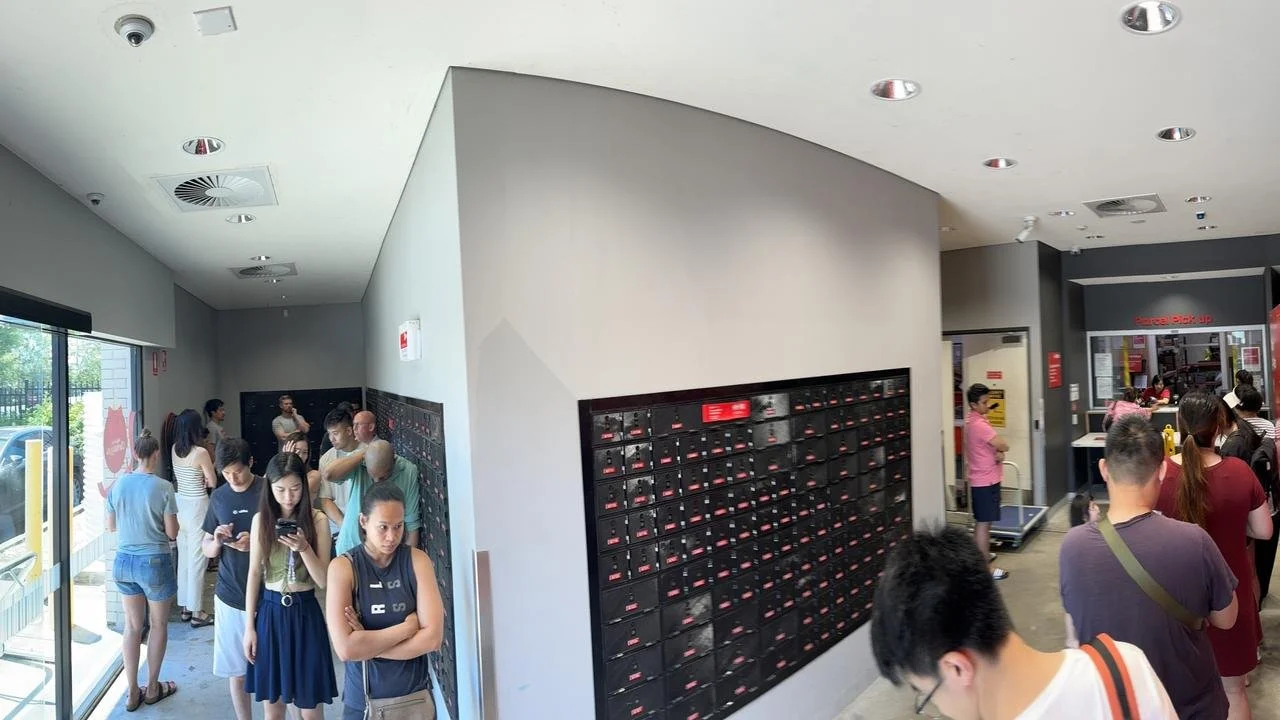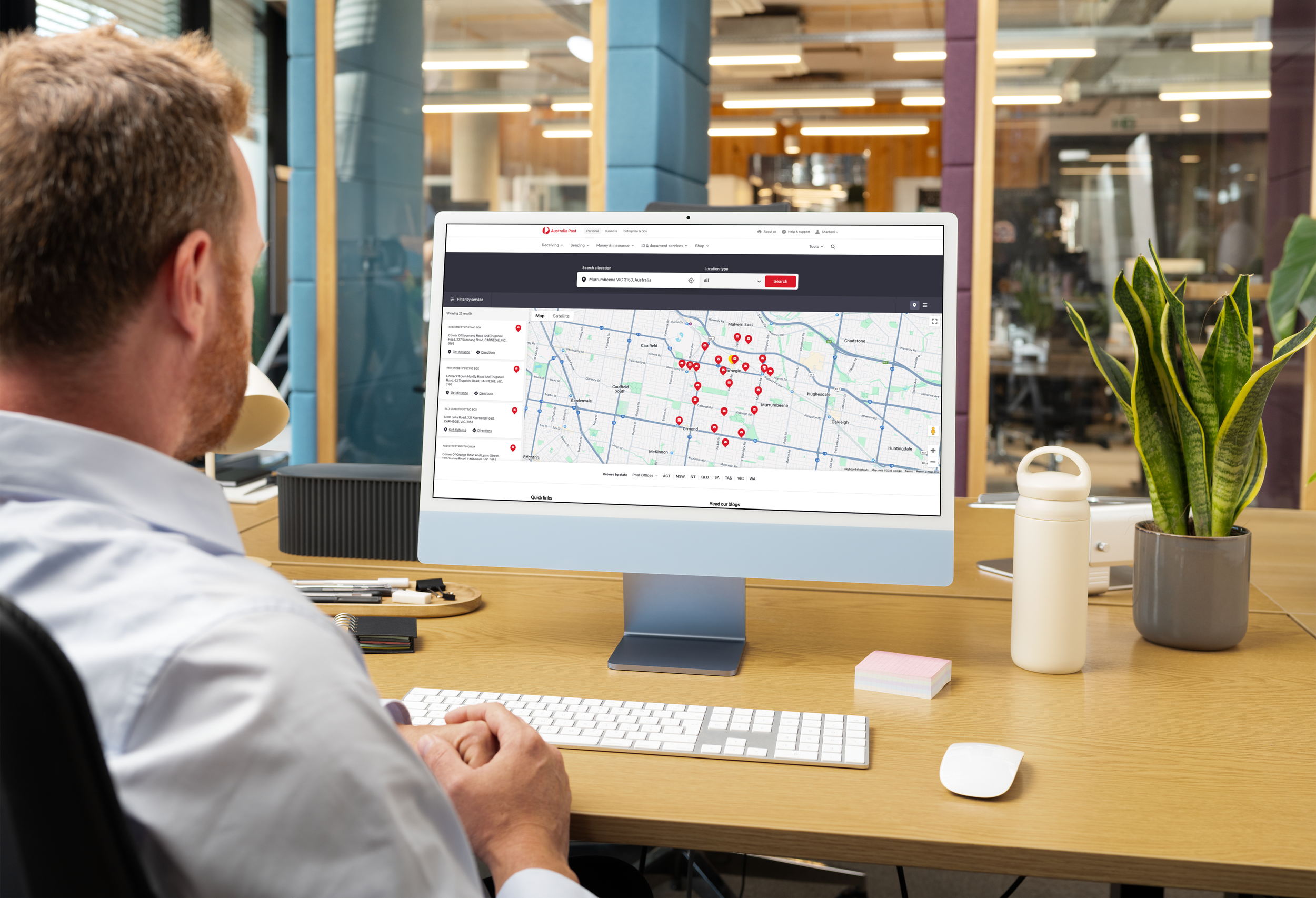Appointment Booking
The digital transformation of appointment booking has revolutionised how organisations manage customer interactions and streamline service delivery. These case studies showcase how various Aussie enterprises have successfully implemented online booking systems, transforming traditional queuing and walk-in services into efficient, customer-focused experiences. From medical centres to government services, each implementation reveals valuable insights into digital appointment management's challenges, solutions and measurable impacts. The following examples demonstrate how we could help organisations boost operational efficiency, increase customer satisfaction, and deliver significant cost savings through end to end booking solutions.
Australia Post
Enabling appointment booking for retail
Australia Post has modernised its service delivery to meet evolving customer needs while maintaining its position as one of Australia's most trusted brands. The organisation performs over 3 million identity checks annually and serves as a critical provider of essential services, particularly in regional and rural areas.
The Challenge
With over 4300 post offices across Australia, AusPost has the largest retail footprint in Australia, serving over 227m visits annually. With the onset of COVID-19, increasing digitisation and changing customer behaviours, we were posed with the following challenges:
Service Modernization: Align with government reforms to optimise operations amid declining letter volumes (-66% since 2008) and surging parcel demand (+70% post-pandemic).
Customer-Centric Design: Enable 24/7 bookings via web/mobile interfaces, integrating with MyPost accounts for unified tracking.
Operational Efficiency: Reduce in-person queue times through scheduled appointments, particularly for complex transactions like passport verifications.
Network Fragmentation:
65% of post offices being licensed franchises caused inconsistent adoption.
User Education Gap:
37% initial no-show rate for passport appointments.
Legacy System Integration:
18-month migration from 14 legacy platforms to OneView POS.
The Solution
As part of an Australia-wide modernisation of their POS (point of sale) system as well as supporting customer facing portal and app, we designed a more comprehensive appointment booking system. The appointment booking system was integrated into the AusPost mobile app and website, allowing customers to:
Check if their nearby Post Office accepts walk-ins or requires appointments
Book appointments for passport and identity services
Receive automated confirmations and reminders
Key Features
The system includes:
Real-time availability updates
Automated confirmation notifications
Customer management tools
ntegration with existing Post Office systems
Security Measures
The platform incorporated secure data encryption and strong authentication methods integrated with customers’ existing MyPost and MyPost Business logins. We also ensured global compliance standards with privacy regulations and WCAG Accessibility compliance to AA standards to ensure customers with accessibility needs could also avail the process.
Impact
There was a significant operational impact, customer satisfaction and business efficiency.
41% reduction in counter wait times at corporate offices.
63% of passport applications are now pre-verified digitally.
58% appointment uptake for complex transactions.
22% of staff time reallocated to parcel handling.
$3.8m annual savings from reduced walk-in processing.
Mining company
Streamlining Maintenance Operations with a Job Booking App for a Mining Company
In the dynamic and demanding environment of the mining industry, efficient maintenance operations are critical to ensuring safety, productivity, and minimal downtime. Recognising the need for a more streamlined approach, we implemented a comprehensive Job Booking Application designed to revolutionise how mine workers receive, manage, and report on job tasks.
The Challenge
Business Challenges:
Inefficient Job Allocation: Traditional job assignment processes relied on manual methods, causing delays and miscommunications.
Lack of Real-Time Updates: Supervisors struggled to monitor job progress, leading to operational blind spots and inefficiencies.
Route Planning Difficulties: Without visibility of job locations, workers often faced unoptimised routes, wasting valuable time and resources.
Customer Challenges:
Limited Visibility: Mine workers had difficulty tracking assigned tasks, leading to confusion and missed priorities.
Poor Communication: Reporting job status required multiple steps, resulting in delays and frustration.
Unclear Prioritization: Workers lacked a clear view of the most urgent jobs, affecting productivity and response times.
The Solution
The implementation of the application transformed maintenance workflows through the following key features:
Real-Time Job Assignment: Jobs are directly assigned to mine workers through the app, eliminating manual processes and reducing delays.
Priority-Based Calendar Display: A dynamic calendar interface highlights tasks based on urgency, helping workers focus on high-priority jobs.
Seamless Status Reporting: After job execution, workers can instantly update job status, providing real-time feedback to supervisors.
Integrated Map View: Workers can track all job locations on an interactive map, enabling smarter route planning and time management.
The Impact
The Maintenance Application proved to be a game-changer for the organisation, driving significant improvements in maintenance operations. By addressing both business and worker challenges, the app enhanced productivity, operational visibility, and overall efficiency, setting a new standard for maintenance management in the mining industry.
Improved Operational Efficiency: Job allocation and status tracking became streamlined, reducing administrative overhead and speeding up response times.
Enhanced Worker Productivity: With clear priorities and optimised routes, mine workers managed their tasks more effectively, leading to faster job completions.
Real-Time Visibility: Supervisors gained instant insights into job progress, allowing proactive decision-making and quicker issue resolution.
Reduced Downtime: Faster maintenance turnaround times minimised equipment downtime by 34%, directly contributing to increased production levels.







